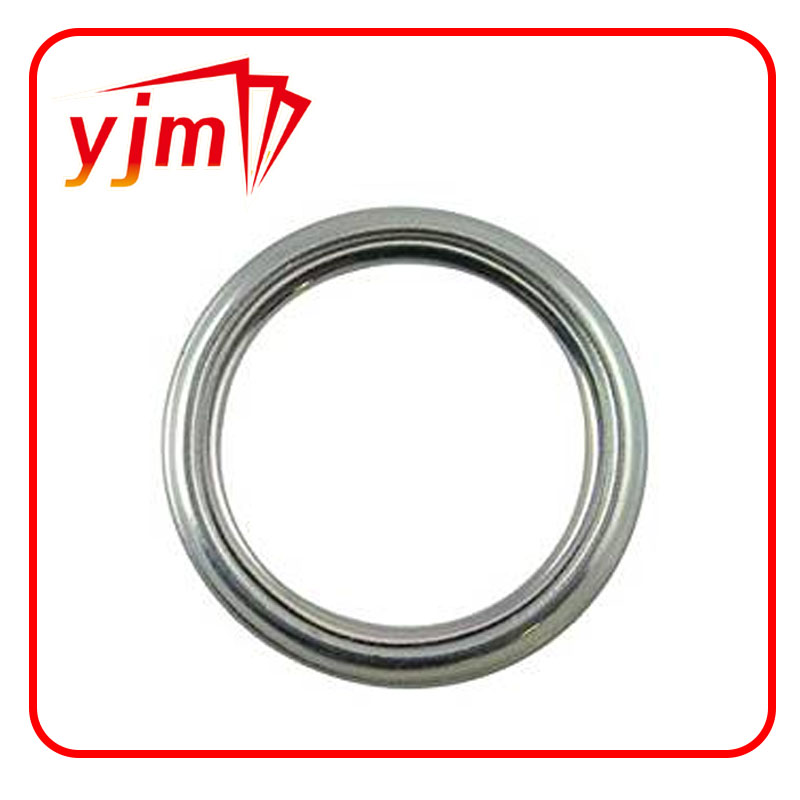o ring seal
Understanding O-Ring Seals Essential Components for Sealing Solutions
O-ring seals are ubiquitous components used in a wide range of industries, including automotive, aerospace, and manufacturing. These circular seals are critical for preventing leaks between components in various systems, ensuring that fluids and gases remain contained under pressure. Their design may appear simple, but the functionality they provide is vital for the efficient operation of many applications.
An O-ring is typically made from elastomeric materials, which provide flexibility and resilience. Common materials include nitrile rubber, silicone, and fluorocarbon, each chosen based on the specific demands of the application, such as temperature resistance, chemical compatibility, and pressure tolerance. The circular shape of the O-ring allows it to evenly distribute pressure and create a reliable seal when compressed between two mating surfaces.
Key Applications of O-Ring Seals
O-ring seals are used in numerous applications. In the automotive industry, they help seal components in engines, transmissions, and cooling systems, preventing leaks that could lead to performance issues or environmental harm. In aerospace, O-rings are critical in ensuring that fuel systems maintain integrity under changing pressures and temperatures during flight. Additionally, in manufacturing, O-rings are employed in hydraulic and pneumatic systems to guarantee the efficient operation of machinery.
The versatility of O-rings extends beyond just sealing; they can also act as cushioning or vibration dampeners, depending on the design and material used. This multifaceted functionality contributes to the widespread use of O-rings across various fields.
o ring seal

Choosing the Right O-Ring
When selecting an O-ring for a specific application, several factors must be considered. Firstly, the temperature range of the application is crucial. Different materials have varying degrees of heat resistance, and choosing the wrong material can result in failure or degradation. Additionally, chemical exposure must be taken into account, as certain materials can be adversely affected by specific fluids or gases.
Another important aspect is the hardness of the O-ring, typically measured on the Shore durometer scale. Softer O-rings may conform better to irregular surfaces, while harder O-rings are generally better suited for high-pressure applications.
Installation and Maintenance
Proper installation is vital to ensure that O-rings function correctly. They should be installed without twisting or stretching, which can lead to premature failure. Regular inspection is also crucial; checking for signs of wear, cracking, or deformation can help prevent unexpected leaks or system failures.
In summary, O-ring seals are essential components that play a crucial role in the functionality of numerous systems across various industries. Understanding their design, selection, and maintenance is key to leveraging their full potential. With the right O-ring in place, efficiency and reliability can be significantly enhanced, making them invaluable in modern engineering solutions. As technology continues to advance, the importance of reliable sealing solutions like O-rings will only grow, solidifying their status as a fundamental part of engineering and manufacturing processes.
-
Understanding Automotive Oil Seals: Essential Components for Engine and Shaft Protection
News Jul.30,2025
-
The Importance of Heavy Duty Seals in Industrial and Residential Applications
News Jul.30,2025
-
Exploring Industrial Oil Seals: From Felt Oil Seals to TTO and CFW Solutions
News Jul.30,2025
-
Essential Guide to Oil Seals: From Radial to Metal-Cased Seals for Industrial Reliability
News Jul.30,2025
-
Choosing the Right Oil Seals and Gaskets for Industrial and Automotive Applications
News Jul.30,2025
-
Cassette Seals: Durable Sealing Solutions for Harsh Environments
News Jul.30,2025
-
Understanding the Front Main Engine Seal: Purpose, Maintenance, and Installation
News Jul.29,2025
Products categories















